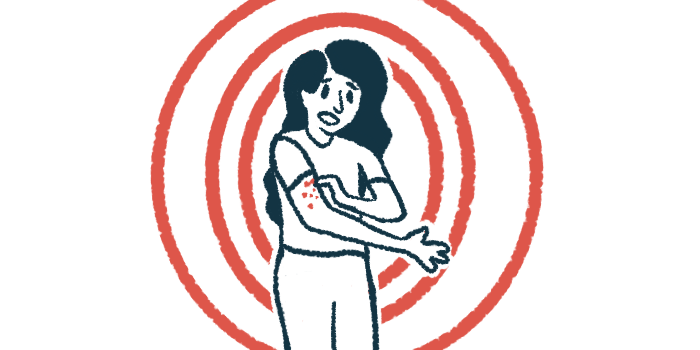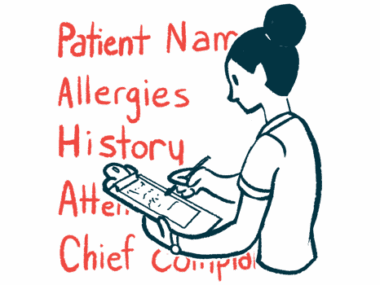Algorithm helps distinguish type of angioedema from chronic hives
Model takes into account factors such as frequency, location of swelling attacks
Written by |

An algorithm that takes into account factors such as the frequency and location of swelling attacks may help distinguish chronic histaminergic angioedema (CHA), which is a form of angioedema, from chronic spontaneous urticaria (CSU), a disorder with similar symptoms.
That’s according to a study, “Predictive model to differentiate chronic histaminergic angioedema and chronic spontaneous urticaria with angioedema,” published in The Journal of Allergy and Clinical Immunology.
CHA marked by swelling driven by allergic reaction with no clear trigger
Acute allergic angioedema is characterized by swelling that’s driven by an allergic reaction. CHA bears the hallmark signs of acute allergic angioedema, with patients experiencing bouts of swelling that respond to treatment with allergy medications, such as antihistamines and corticosteroids. Yet, no clear allergy trigger can be identified in the case of CHA.
CSU is characterized by bouts of urticaria (hives) that occur without any clear cause. In terms of symptoms, it is virtually identical to CHA. In fact, CSU patients can experience angioedema-like swelling, sometimes even in the absence of hives.
There’s still debate as to whether CHA and CSU are two distinct clinical entities, or two subtypes of the same disease.
To gain more insight on the similarities and differences between the two conditions, a team of scientists in Spain compared the clinical characteristics of 56 people with CHA and 40 with CSU, all of whom had experienced angioedema-like swelling.
“In this work, an exhaustive, comparative analysis was executed between both [CHA and CSU] to explore whether these correspond to 1 or 2 independent diseases,” the researchers wrote.
Patients with both conditions showed no clear differences in terms of demographics or family history, but there were some notable distinctions in the frequency and location of attacks.
Specifically, patients with CSU tended to have more frequent bouts of swelling, both in the year before diagnosis (median of 12 vs. 8) and the year after diagnosis (median of 24 vs. 2), compared with those with CHA.
CHA patients more likely to have swelling around mouth, throat
Conversely, those with CHA were more likely to have swelling in the area around the mouth and throat (46% vs. 17%), particularly in the uvula, which is the dangling protrusion at the back of the mouth (12% vs. 0%).
Patients with CHA often needed higher doses of medications like antihistamines to get swelling under control, while patients with CSU were more likely to require long-term prophylaxis (preventive therapy) to manage their condition.
Among patients with available data, scores on tests evaluating quality of life tended to be a bit better for those with CHA than for those with CSU, but the difference between the groups was not considered to be statistically significant.
Collectively, the data suggest there are subtle but meaningful differences between the two conditions, which the researchers said supports the idea that they are two distinct diseases.
With all these data in hand, the researchers constructed a statistical model to help distinguish CHA from CSU. The model incorporated data on the frequency and location of swelling attacks, as well as quality-of-life scores and data from laboratory tests.
The final model was able to accurately distinguish whether individual patients had CHA or CSU in more than 95% of cases.
The model “allows us to take an important step in differentiating between these 2 highly similar entities,” the researchers wrote, adding their “work supports the hypothesis published in previous studies that CHA and CSU should not automatically be considered the same disorder.”







